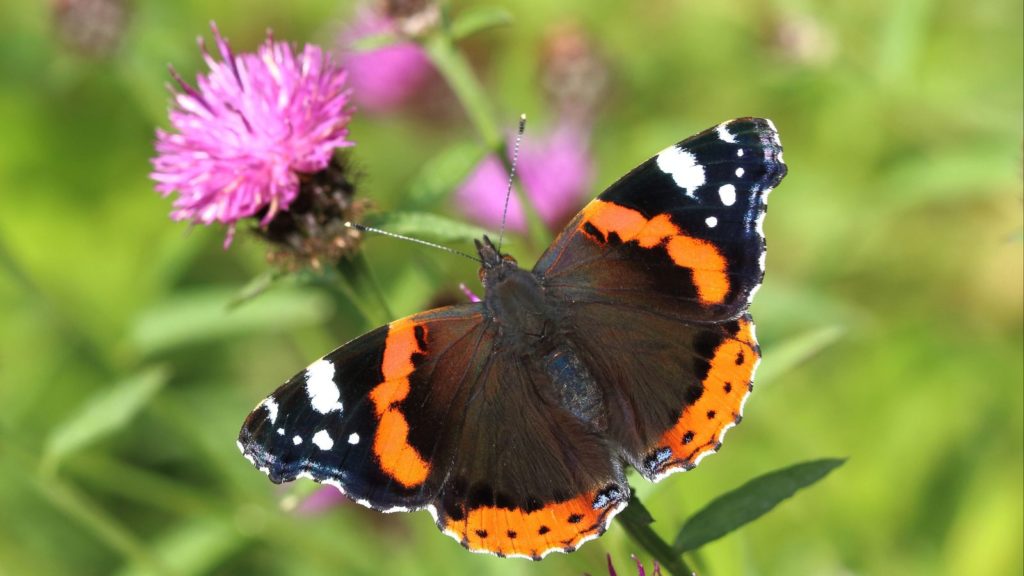Brits asked to join Big Butterfly Count as experts warn some species face extinction | Science & Tech News

People in Britain are being asked to join the Big Butterfly Count as experts warn time is running out to save some species.
A recent report from wildlife charity Butterfly Conservation warned that more than two-fifths of British butterflies are threatened with extinction, in the face of climate change, pollution and loss of habitat.
The charity has warned it is not just rare species that are under threat.
Half of all of Britain’s butterfly species are now on the red list, with the latest assessment revealing a 26% increase in the number of species considered threatened with extinction.
Common butterflies – which are featured in the count – have seen significant declines, such as the small tortoiseshell, once found in gardens throughout the country, which has fallen by 79% since 1976.
But, with the right information and conservation action, species can be brought back from the brink, Butterfly Conservation has said.
The charity’s annual Big Butterfly Count can act as an “early warning system”, helping scientists understand how environmental changes are affecting insects, and gather data from areas that would otherwise be unrecorded, experts said.
And spending some time in nature to observe butterflies as part of the count can be good for people’s mental health, they added.
To take part in the survey, people just need to spend 15 minutes in an outdoor space, counting the number and type of butterflies and some day-flying moths they see and log their findings on the Big Butterfly Count website or app.
Last year’s butterfly count brought in a record 150,000 reports of sightings – all based on people taking 15 minutes to go outside and relax and take notes on the different butterflies they see.
However the numbers reported – an average of just nine per person – was the lowest the citizen insect survey had recorded since the scheme began 13 years ago.
The Clifden Nonpareil moth, thought to have been extinct in Britain for 50 years, has now recolonised and is breeding
Butterfly Conservation wants to know if that trend is continuing in 2022.
Dr Zoe Randle, senior surveys officer at Butterfly Conservation, said: “Thanks to the wonderful British public, who take part in their thousands, the Big Butterfly Count is the largest natural history citizen science project involving insects in the world and provides us with a valuable snapshot of what is happening for butterflies across the whole of the UK.
“It can act as an early-warning system, letting us know how various environmental changes are impacting insects, and allows us to gather vital data from places that would otherwise be totally unrecorded.”
Read more:
Butterfly numbers lowest on record as experts warn of ‘perilous’ state of UK wildlife
Previously extinct large blue butterfly flourishes after reintroduction
Dr Randle added: “We really need people’s help this year to help us figure out where our butterflies are and what we need to do to save them.”
It comes as species are being discovered in new areas, while others are becoming harder to find at all in the UK.
The Jersey tiger, a striking moth which flies during the day as well as the night, appears in this year’s Big Butterfly Count identification chart for the first time.
Research indicates the species has become well established along the south coast of England, but is moving further north and is now being found in increasing numbers in London.
Meanwhile, the large blue butterfly was introduced to Rodborough Common in Gloucestershire in 2019 after five years of preparing the landscape for the species.
Globally endangered, large blue butterflies’ life cycle involves the larvae tricking a particular species of red ant into carrying them into their nest.

Large butterflies have returned after being declared extinct in Britain in 1979
The species was declared extinct in Britain in 1979 before being reintroduced from European populations nearly 40 years ago and is now successfully reproducing in the wild.
To take part in the UK-wide Big Butterfly Count people just need to spend 15 minutes in an outdoor space during sunny conditions and count the types and amounts of butterflies and some day-flying moths they see.
This year’s count runs from 15 July to 7 August and people can find out more and take part by visiting https://bigbutterflycount.butterfly-conservation.org/ or downloading the free Big Butterfly Count app.







Recent Comments